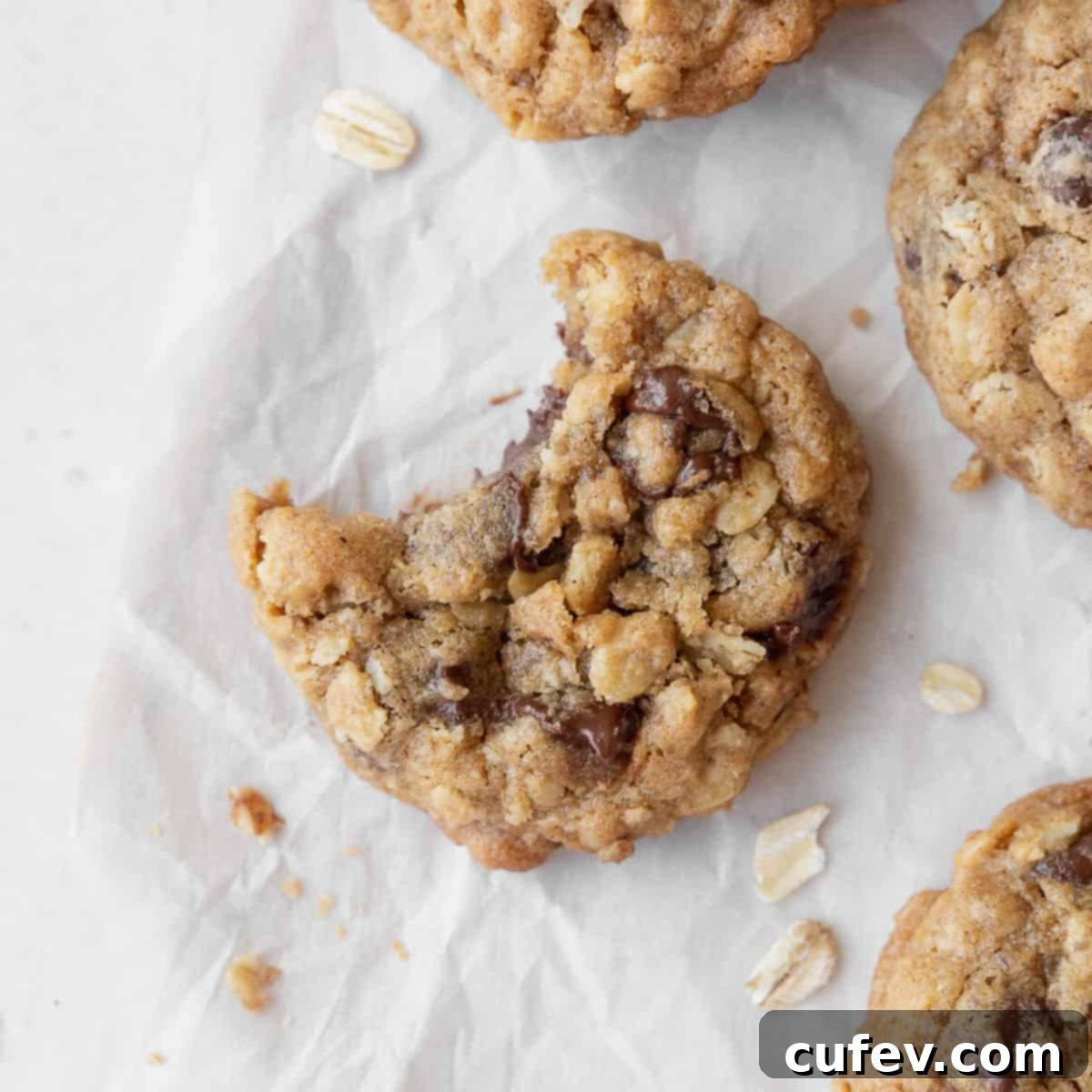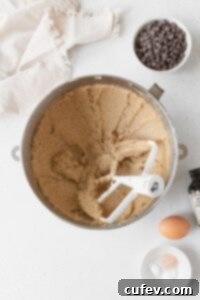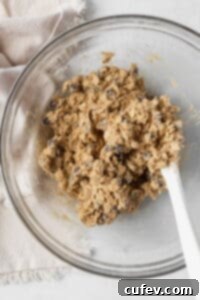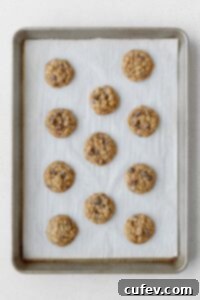The Ultimate Chewy Gluten-Free Oatmeal Cookies: Wholesome, Easy & Irresistible
Get ready to indulge in the absolute best gluten-free oatmeal cookies you’ve ever tasted! These delightful treats are incredibly chewy, bursting with flavor, and packed with wholesome goodness. What’s even better? They are remarkably easy to make, proving that you don’t need wheat to bake truly irresistible cookies that everyone will love.

If you’ve been following a gluten-free diet and thought you had to give up those beloved, comforting oatmeal cookies from your childhood, think again! This exceptional gluten-free oatmeal cookie recipe is designed to exceed your expectations. Each cookie boasts perfectly crispy edges and bottoms, while maintaining a wonderfully soft and chewy center – a texture often sought after in traditional cookies, now perfectly achieved without gluten.
The harmonious blend of warm vanilla and comforting cinnamon infuses these cookies with an inviting aroma and taste. When combined with the satisfying heartiness of oats and the rich, melty indulgence of chocolate chips, these gluten-free oatmeal cookies transform into the ultimate treat for any occasion. Whether it’s a family gathering, a quiet evening at home, or a special dessert, these cookies are guaranteed to impress. Just one bite will make you understand why these are consistently hailed as the very best gluten-free oatmeal cookies you can bake.
Essential Ingredients for Perfect Gluten-Free Oatmeal Cookies
Crafting these delicious gluten-free oatmeal cookies requires only a handful of simple, readily available ingredients. Many of these staples are likely already in your pantry! Here’s a closer look at the key components and some important considerations for each to ensure your cookies turn out perfectly every time:
Butter: For the best results, you can use either salted, unsalted, or even vegan butter sticks. The crucial factor is ensuring the butter has an 80% fat content (approximately 8g of fat per 2 teaspoons). This specific fat percentage is vital for achieving the ideal cookie texture and spread. If your butter has a lower fat content, you’ll want to adjust the recipe by using ⅔ cup of butter combined with ⅓ cup of refined coconut oil. Refined coconut oil is recommended because it lacks the distinct coconut flavor, which allows the classic oatmeal cookie taste to shine through.
Gluten-Free Rolled Oats: This is a non-negotiable for truly gluten-free cookies. Always look for oats that are specifically labeled and certified gluten-free. While oats are naturally free of gluten, conventional oats are frequently processed in facilities that also handle wheat, barley, and rye. This common practice leads to cross-contamination, making them unsafe for individuals with celiac disease or gluten sensitivity. Certified gluten-free oats undergo strict protocols to prevent such contamination, guaranteeing a safe and delicious treat.
Gluten-Free Flour Blend: The type of gluten-free flour you choose significantly impacts the final texture of your cookies. Opt for a “measure-for-measure,” “1-to-1,” or “cup-for-cup” gluten-free flour blend. It’s particularly important that your chosen blend includes xanthan gum. Xanthan gum acts as a binder, mimicking the elastic properties of gluten, which is essential for preventing crumbly cookies and achieving that desirable chewy texture in gluten-free baking.
Brown Sugar & Granulated Sugar: The combination of both sugars is key. Brown sugar adds moisture, chewiness, and a subtle caramel note, while granulated sugar contributes to crisp edges and overall sweetness.
Large Egg: Acts as a binder and helps with the structure and richness of the cookies.
Vanilla Extract: A classic flavor enhancer that brings warmth and depth to the cookies.
Fine Sea Salt: Balances the sweetness and enhances all the other flavors.
Baking Soda & Baking Powder: These leavening agents work together to give the cookies their perfect rise and soft texture.
Chocolate Chips or Raisins: These are the classic mix-ins for oatmeal cookies, and both are absolutely delicious! Feel free to choose your favorite, or even combine them for a delightful blend of flavors and textures. We’ll delve into more exciting variations later in the article.
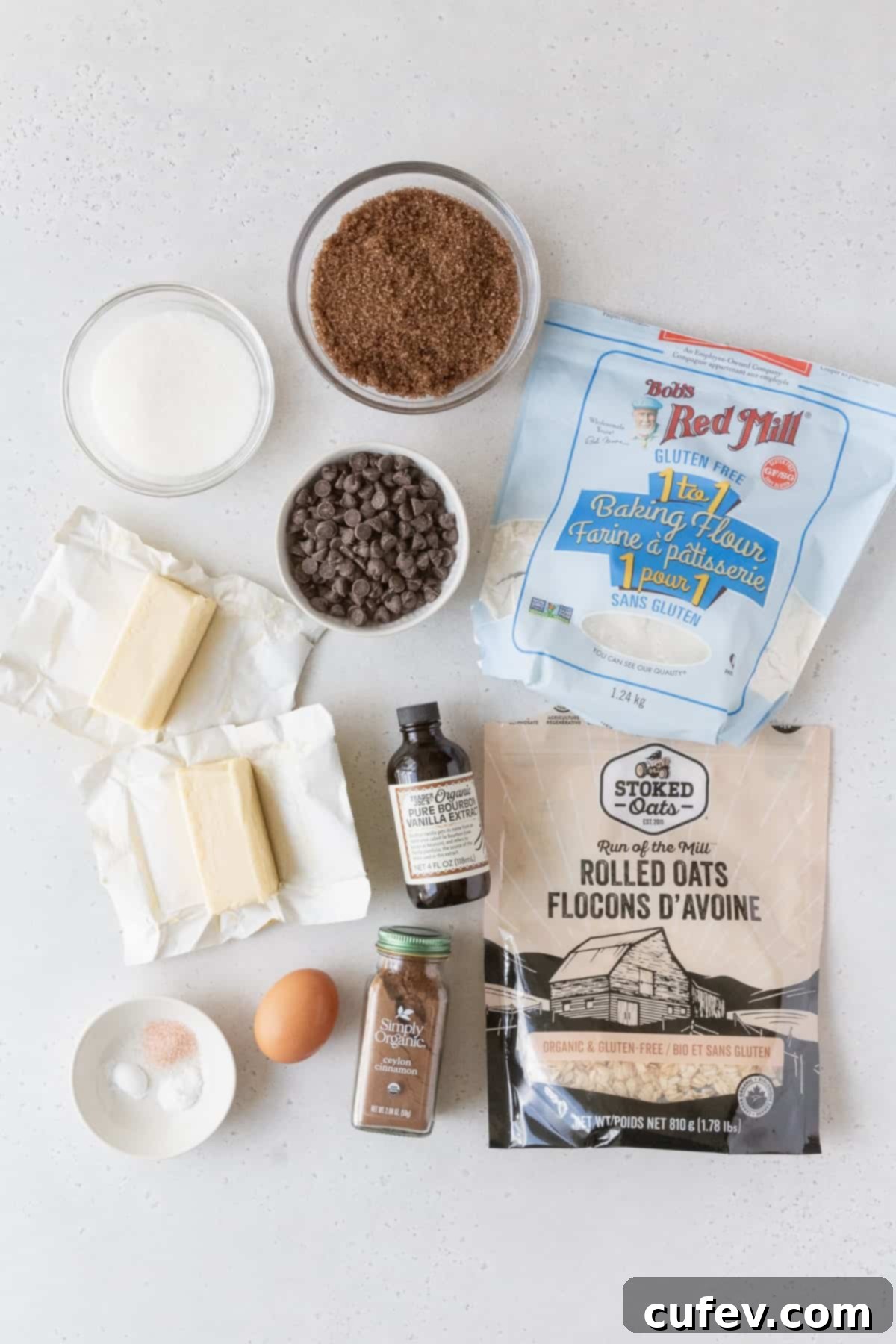
Are Oats Truly Gluten-Free? Understanding the Facts
It’s a common question with an important distinction: oats themselves are naturally gluten-free. This means that the oat grain does not contain gluten proteins like wheat, barley, or rye. However, the journey from farm to pantry can introduce gluten through cross-contamination. Many commercial brands process their oats in the same facilities or on shared equipment with gluten-containing grains. This can lead to small, but significant, amounts of gluten ending up in the oat products, making them unsafe for individuals with celiac disease or severe gluten sensitivity.
To ensure your gluten-free oatmeal cookies are safe and compliant with a strict gluten-free diet, it is absolutely essential to purchase oats that are explicitly certified gluten-free. This certification means the oats have been grown, harvested, transported, and processed under strict controls to prevent cross-contamination, and tested to ensure they meet gluten-free standards (typically less than 20 parts per million of gluten).
While the vast majority of people with celiac disease can safely enjoy certified gluten-free oats, a small subset of individuals may react to a protein in oats called avenin. Avenin is structurally similar to gluten, and for some, it can trigger an immune response. This avenin sensitivity is rare, and it’s important to note that most celiacs do not experience this issue. If you are uncertain about your sensitivity to oats, it’s always best to consult with a healthcare professional or a registered dietitian. For the majority, as long as the oats are certified gluten-free, these delicious oatmeal cookies are a perfectly safe and enjoyable treat!
If you’re a fellow lover of oats and enjoy their nutritional benefits, be sure to also try my blueberry overnight oats for another fantastic gluten-free oat recipe!
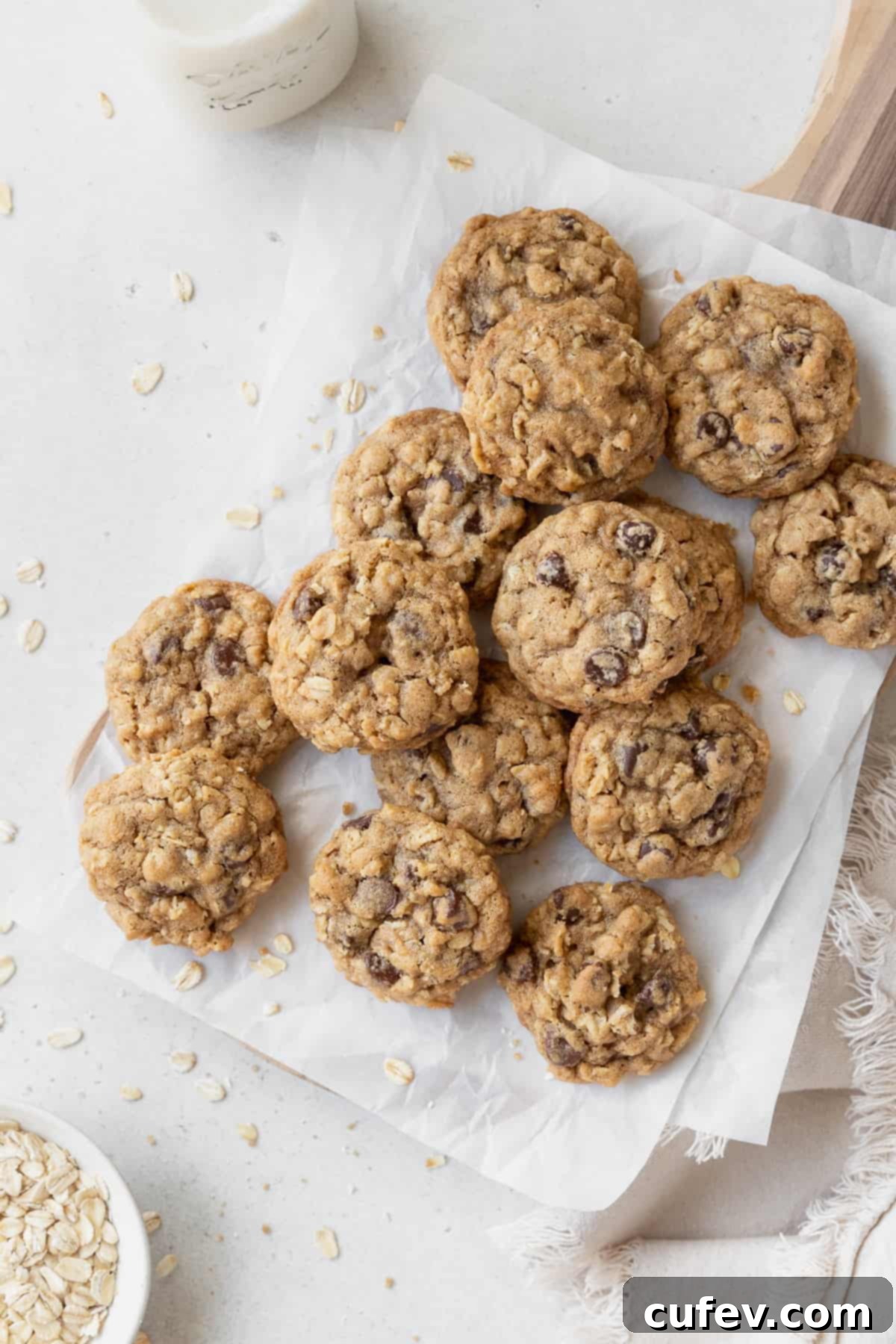
Expert Tips for Baking Perfectly Delicious Gluten-Free Oatmeal Cookies
Achieving bakery-quality gluten-free oatmeal cookies is easier than you think with these expert tips:
Measure by Weight for Precision: This is arguably the most critical tip for consistent baking, especially with gluten-free flours. Using a kitchen scale to measure your ingredients by weight rather than volume (cups) is the most accurate method. Flour can pack down differently in a measuring cup, leading to varying amounts with each bake. By measuring by weight, you eliminate the risk of adding too much flour, which is a common culprit for hard, dry, and crumbly gluten-free cookies. Consistent weight measurements ensure your cookies have the same perfect texture and flavor every single time you bake them!
Scrape the Bowl Thoroughly: During the mixing process, dry ingredients often settle at the bottom or cling to the sides of the mixing bowl, especially in a stand mixer. Occasionally pausing to scrape down the sides and bottom of the bowl with a flexible silicone spatula ensures all ingredients are fully incorporated. Little hidden pockets of dry flour or unmixed sugar can lead to unevenly baked cookies, resulting in odd textures and “wonky” shapes. A quick scrape ensures a homogenous dough for uniform results.
Don’t Skip Chilling the Dough: We know how tempting it is to rush to warm, freshly baked cookies, but patience truly pays off here. Chilling the cookie dough for at least 2 hours (or longer) is essential for several reasons. Firstly, it solidifies the butter in the dough, which significantly reduces cookie spread in the oven, leading to thicker, chewier cookies. Secondly, chilling allows the gluten-free flour to fully hydrate, preventing a gritty texture. Lastly, it deepens the flavors, resulting in a richer, more complex taste. This step is a game-changer for texture and flavor!
Avoid Overbaking at All Costs: Overbaking is the quickest way to turn a potentially perfect cookie into a dry, crumbly disappointment. Gluten-free cookies can go from perfectly soft to hard very quickly. Keep a close eye on your cookies; they are typically done when the edges are set and lightly golden, but the centers still look slightly soft or underbaked. They will continue to set and firm up as they cool on the baking sheet. Aim for 8-9 minutes for soft, chewy cookies. Who wants a dry cookie when you can have a wonderfully tender one?
Achieve Perfectly Round Cookies: For that professional, uniform look, a round cookie cutter is your secret weapon. Immediately after your cookies come out of the oven and are still warm, soft, and pliable on the baking sheet, place a slightly larger round cookie cutter (or even a large glass or mug) around each cookie. Gently shuffle or swirl the cookie cutter in a circular motion, guiding the warm edges of the cookie into a perfectly round shape. This easy trick instantly transforms misshapen cookies into beautiful circles.
Make Them Ahead for Instant Gratification: Having freshly baked cookies on demand is a dream, and this recipe makes it possible! Prepare a larger batch of dough and scoop out extra cookie dough balls. Place these scooped portions onto a piece of parchment paper and flash freeze them until they are solid enough to handle without sticking to your fingers. Once firm, transfer the dough balls to a freezer-safe bag or airtight container. They can be stored in your freezer for up to 2 months. When a cookie craving strikes, simply grab a few, preheat your oven, and add an extra minute or two to the baking time – no thawing required!

Gluten-Free Oatmeal Cookies
Print
Pin
Rate
Ingredients
- 1 cup butter (salted, unsalted, or vegan sticks) softened at room temperature (ensure 80% fat content)
- 1 cup packed light or dark brown sugar
- ½ cup granulated sugar
- 1 large egg at room temperature
- 1 teaspoon pure vanilla extract
- 2 cups certified gluten-free rolled oats
- 1½ cups gluten-free measure-for-measure flour blend (must contain xanthan gum)
- ¾ teaspoon fine sea salt
- ½ teaspoon baking soda
- ½ teaspoon baking powder
- 1 cup mix-ins (chocolate chips, raisins, or a combination)
Instructions
-
In the bowl of a stand mixer fitted with the paddle attachment, combine the softened butter, brown sugar, and granulated sugar. Beat on high speed for approximately 3 minutes, or until the mixture becomes visibly fluffy and light in color. Remember to pause and scrape down the sides and bottom of the bowl with a silicone spatula to ensure thorough mixing.

-
Add the large egg and vanilla extract to the creamed butter and sugar mixture. Continue to beat on medium speed until all ingredients are well combined and smooth. Once again, scrape down the bowl with the spatula to incorporate any lingering unmixed portions.

-
In a separate medium-sized bowl, whisk together the gluten-free measure-for-measure flour, certified gluten-free oats, fine sea salt, baking soda, and baking powder. Gradually add this dry ingredient mixture to the wet butter mixture in the stand mixer. Mix on low speed until just combined, being careful not to overmix. Use your spatula to scrape the bowl one last time, ensuring there are no hidden pockets of dry flour at the bottom or sides.

-
If you are adding chocolate chips, raisins, or any other mix-ins, gently fold them into the cookie dough using a spatula. Once incorporated, cover the bowl tightly with plastic wrap and place it in the refrigerator to chill for a minimum of 2 hours. This chilling step is crucial for preventing spread and enhancing flavor and texture.

-
Once the dough has chilled, preheat your oven to 375°F (190°C). Prepare a baking sheet by lining it with parchment paper to prevent sticking and ensure even baking.
-
Using a cookie scoop (approximately a heaped tablespoon or 1.5-2 tablespoons), portion out the chilled cookie dough onto the prepared baking sheet. Ensure you leave ample space, about 2 inches, between each dough ball to allow for proper spreading. Bake the cookies in the preheated oven for 8-9 minutes. The edges should be set and lightly golden, while the centers may still appear slightly soft. This indicates a perfectly chewy cookie. Allow the cookies to cool on the baking sheet for 10 minutes before carefully transferring them to a wire rack to cool completely. Enjoy your homemade gluten-free oatmeal cookies!

Notes
Nutrition
Storing Your Gluten-Free Oatmeal Cookies for Lasting Freshness
To keep your delicious gluten-free oatmeal cookies fresh and delightful for as long as possible, proper storage is key. Gluten-free baked goods often have a slightly different shelf life than their conventional counterparts, tending to become stale a bit quicker due to the absence of gluten structure.
Storing at Room Temperature: Once your cookies have completely cooled, place them in an airtight container. They will remain fresh and chewy for up to 4 days when stored at room temperature. For optimal freshness, consider adding a slice of bread or an apple wedge to the container; these will help keep the cookies soft by imparting moisture (just be sure to replace it every day or two to prevent mold).
Freezing for Longer Enjoyment: If you’ve baked a large batch or want to prepare them for future cravings, freezing is an excellent option. To prevent freezer burn and maintain their delicious texture, wrap each individual cookie tightly with two layers of plastic wrap. Then, place the wrapped cookies into a heavy-duty freezer bag or an airtight freezer-safe container. They can be stored in the freezer for up to 2 months. When you’re ready to enjoy them, simply thaw the cookies at room temperature for an hour or two, or transfer them to the refrigerator overnight. You can also gently warm them in a microwave for a few seconds for that freshly baked feel.
Exciting Variations to Customize Your Oatmeal Cookies
While the classic gluten-free oatmeal cookie recipe is phenomenal on its own, don’t hesitate to get creative and personalize your batch with these delightful variations:
Crunchy Nuts: Enhance the texture and add a rich, nutty flavor by mixing in ½ to 1 cup of chopped walnuts, pecans, or almonds. Toasting the nuts lightly before adding them can further deepen their flavor profile.
Tropical Coconut: For a delightful tropical twist and added chewiness, fold in ½ to 1 cup of shredded or flaked coconut (sweetened or unsweetened). The coconut complements the oats beautifully.
Assorted Dried Fruits: While raisins are the traditional choice for oatmeal cookies, don’t limit yourself! Dried cranberries offer a tart contrast, dried blueberries add a burst of sweetness, or even finely chopped dried apricots can provide a unique flavor and chewy texture. Experiment with a medley of your favorites!
Diverse Chocolate Chips: Semi-sweet chocolate chips are a popular choice in this recipe, but feel free to swap them out for other varieties. Dark chocolate chips will offer a more intense, rich flavor, while milk chocolate chips provide a sweeter, creamier bite. White chocolate chips or even butterscotch or peanut butter chips can also create exciting new flavor combinations. No chips on hand? Roughly chop your favorite chocolate bar for rustic chunks of melty goodness!
Spices & Zest: Introduce a pinch of nutmeg or allspice alongside the cinnamon for a more complex spice profile, especially during fall and winter months. A teaspoon of orange or lemon zest can also brighten the cookies with a fresh, citrusy aroma and taste.
Nut Butters: For an extra layer of flavor and chewiness, replace a tablespoon or two of butter with an equal amount of creamy peanut butter or almond butter. This variation can add a wonderful depth to your gluten-free oatmeal cookies.
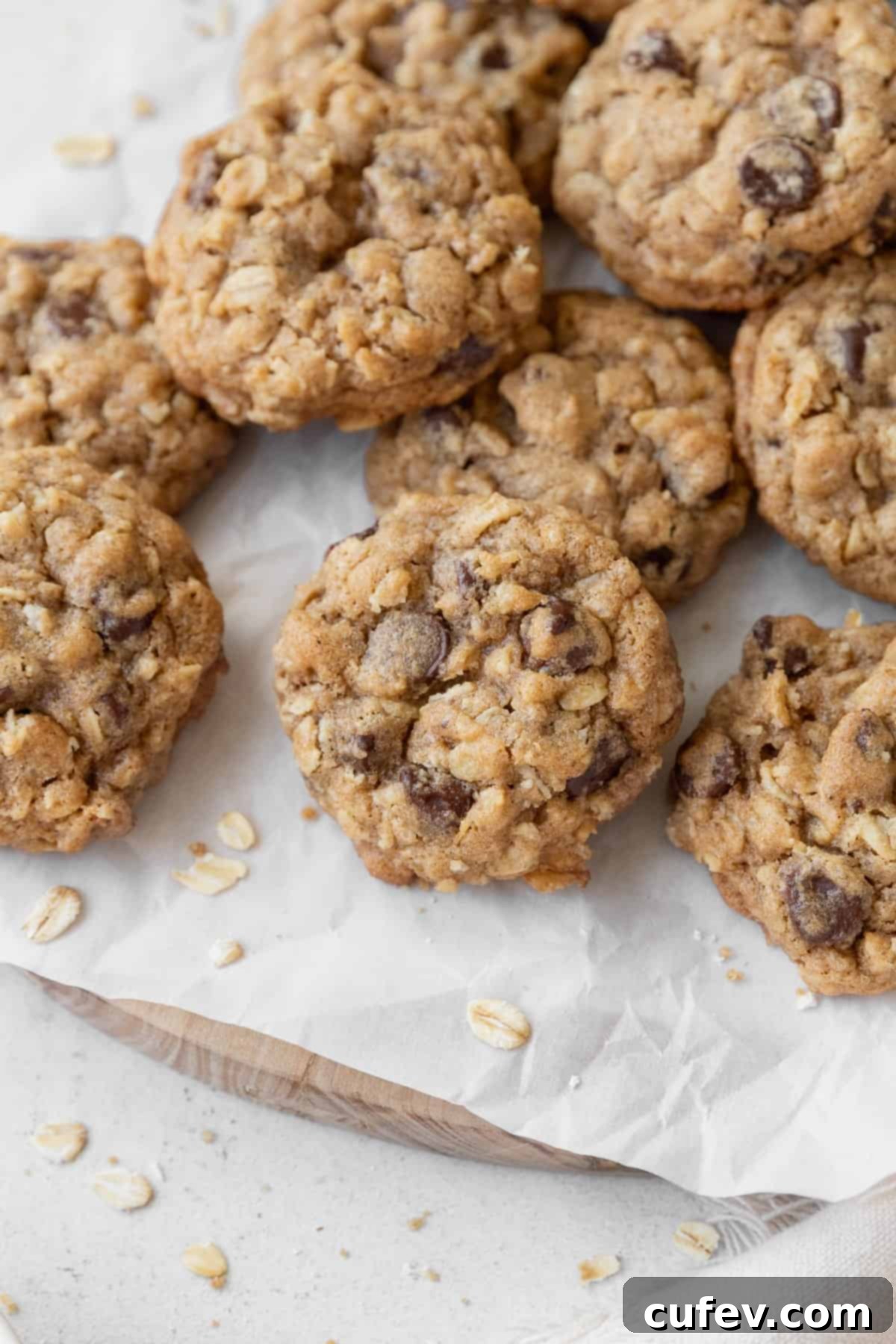
Frequently Asked Questions About Gluten-Free Oatmeal Cookies
For optimal results with these gluten-free oatmeal cookies, we highly recommend using a “measure-for-measure,” “1-to-1,” or “cup-for-cup” gluten-free all-purpose flour blend. The critical component to look for in these blends is the inclusion of xanthan gum. Xanthan gum acts as a vital binder in gluten-free baking, mimicking the elasticity that gluten provides and preventing your cookies from becoming crumbly. My personal favorite and a consistently reliable option is Bob’s Red Mill Gluten-Free 1-to-1 Baking Flour.
You have a couple of excellent options for gluten-free oats, depending on your preferred texture. If you enjoy a heartier, more noticeable oat texture in your cookies, then certified gluten-free rolled oats (also known as old-fashioned oats) are the best choice. They provide a satisfying chewiness and visible oat flakes. However, if you prefer a smoother cookie with a less prominent oat texture, then certified gluten-free quick oats will work wonderfully. Both options will deliver a delicious cookie, so it comes down to personal preference!
There are a few common reasons why your gluten-free oatmeal cookies might turn out hard or dry. The most frequent culprit is **overbaking**; gluten-free cookies can quickly go from perfect to overdone. Keep an eye on them and remove them from the oven when the edges are set but the centers still look slightly soft. Another reason could be **incorrect ingredient measurements**, particularly flour. If you measured your flour by volume (cups) and packed it down, you likely added too much. Always measure flour by weight using a kitchen scale for precision, or use the “spoon and level” method if measuring by volume. Lastly, **substitutions** without proper adjustments to fat, sugar, or liquid content can alter the cookie’s delicate balance, leading to a harder texture.
Absolutely! To make these cookies dairy-free, simply substitute the butter with a high-quality, plant-based vegan butter stick. Ensure the vegan butter also has an 80% fat content, similar to regular butter, for the best results. Many excellent vegan butter brands are available that perform beautifully in baking.
While it might be tempting to skip this step, chilling the cookie dough is highly recommended for gluten-free oatmeal cookies! Chilling helps the butter solidify, which prevents the cookies from spreading too much in the oven, ensuring a thicker, chewier texture. It also allows the gluten-free flours to fully hydrate, resulting in a more uniform texture and enhanced flavor. For the best possible cookies, don’t rush the chill time!
Explore More Delicious Gluten-Free Cookie Recipes
If you love these gluten-free oatmeal cookies, you’re in for a treat with these other fantastic wheat-free cookie recipes:
- These gluten-free chocolate chip cookies are a true classic and one of my all-time favorites! If you’re ever unsure which cookies to bake, you can never go wrong with these perfectly chewy and sweet delights. They’re a crowd-pleaser guaranteed to satisfy any chocolate craving.
- For those without nut allergies, these almond flour chocolate chip cookies offer an incredible chewy texture and rich, nutty flavor. This recipe is also a fantastic option if you want to make dairy-free cookies, as the inherent nutty essence of the almonds adds significant depth, making up for any dairy-free substitutions.
- Vegan coconut macaroons are an excellent choice for beginner bakers or anyone looking for a simple, yet elegant dessert. They require only a few ingredients and are surprisingly easy to master, delivering a perfectly chewy and sweet tropical treat.
- Craving those nostalgic, soft-baked sugar cookies from the grocery store? Look no further! These gluten-free sugar cookies are deliciously buttery, wonderfully soft, and provide the perfect canvas for decorating with your favorite icing or frosting for any occasion.
- Our gluten-free thumbprint cookies are both easy to make and impressively beautiful. These charming cookies, with their sweet jam centers, evoke a sense of nostalgia and are guaranteed to be a crowd-pleaser at any gathering.
- When the holidays roll around, these festive gluten-free Christmas cookies are a must-bake! With their delightful combination of vanilla and refreshing peppermint, just one bite will instantly get you into the holiday spirit. Perfect for sharing with loved ones!
